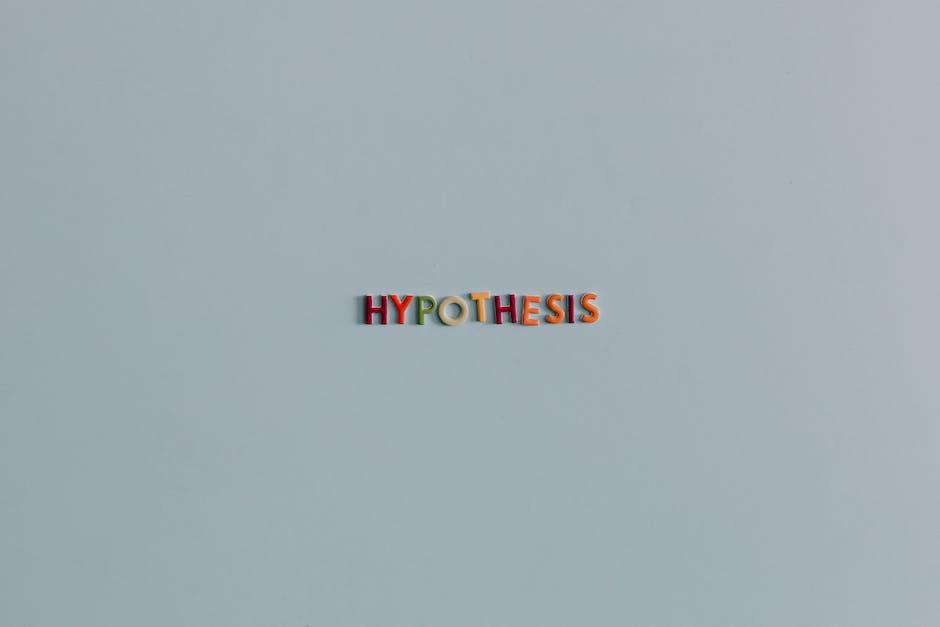In the vast tapestry of scientific theories that seek to unravel the mysteries of our world, one that stands out for its audacious simplicity and captivating elegance is the James Lovelock theory. This groundbreaking concept challenges conventional thinking and invites us to peer through a different lens at the intricate dance of life on our planet. Join us on a voyage of discovery as we delve into the enigmatic realms of Lovelock’s theory and explore its implications for our understanding of the interconnected web of existence.
Table of Contents
- The Gaia Hypothesis: Unveiling James Lovelock’s Theory
- Understanding the Interconnectedness of Earth’s Systems
- Implications of Lovelock’s Theory on Environmental Conservation
- Implementing Sustainable Practices Based on Lovelock’s Principles
- Q&A
- The Conclusion

The Gaia Hypothesis: Unveiling James Lovelock’s Theory
James Lovelock’s Gaia hypothesis presents a fascinating perspective on the interconnectedness of the Earth’s biosphere, proposing that the planet functions as a single, self-regulating organism. At the core of this theory lies the concept that living organisms and their inorganic surroundings are intimately linked, forming a complex system that maintains environmental conditions suitable for life.
Central to Lovelock’s theory is the idea that the Earth actively regulates key elements such as temperature, composition of the atmosphere, and ocean salinity to create optimal conditions for life to thrive. This holistic view of the Earth challenges traditional scientific paradigms, emphasizing the dynamic relationship between living organisms and their environment, paving the way for a deeper understanding of our planet’s intricate ecosystems.

Understanding the Interconnectedness of Earth’s Systems
In the realm of ecological thought, James Lovelock’s Gaia theory stands as a profound exploration of the intricate web that connects Earth’s systems. This theory suggests that the planet functions as a self-regulating organism, where all components – from the atmosphere to the biosphere – interact in a harmonious dance of balance.
**Through Lovelock’s perspective,** we come to understand that the oceans, forests, and even human activities are all interconnected, influencing each other in ways often unseen. This interconnectedness underscores the importance of recognizing the delicate relationships between Earth’s diverse ecosystems and highlights the necessity of collective efforts to preserve and protect our planet for future generations.

Implications of Lovelock’s Theory on Environmental Conservation
James Lovelock’s Gaia hypothesis proposes that the Earth is a self-regulating system, where living organisms and their inorganic surroundings form a complex interactive system that maintains the conditions for life on our planet. This theory has profound implications for environmental conservation efforts worldwide. Here’s how Lovelock’s theory influences our approach to preserving the environment:
- Interconnectedness: Lovelock’s theory highlights the interconnected nature of all life forms and the environment. This understanding underscores the importance of preserving biodiversity and ecosystems to maintain a balanced and healthy planet.
- Climate Change: The Gaia hypothesis challenges us to view climate change not just as a human-made issue but as a result of the Earth’s system responding to changes. This perspective urges us to address climate change holistically by considering the Earth as a living organism that we must work with, not against.
| Key Point | Impact |
|---|---|
| Interconnectedness | Highlights importance of biodiversity preservation |
| Climate Change | Urges holistic approach to address climate change |

Implementing Sustainable Practices Based on Lovelock’s Principles
Embracing the essence of James Lovelock’s Gaia theory, businesses can revolutionize their approach towards sustainability. By acknowledging the interconnectedness of all living beings and the Earth itself, organizations can adopt practices that not only benefit their bottom line but also contribute positively to the planet. Applying Lovelock’s principles can lead to a harmonious relationship between business operations and the environment, fostering a more sustainable future.
Key Points to Consider:
- Resilience and Adaptation: Businesses can leverage the concept of Gaia’s self-regulation to adapt to changing environmental conditions and minimize their ecological footprint.
- Collaborative Networks: Encouraging partnerships and collaborations within and beyond industries can enhance collective efforts towards sustainability goals.
| Benefit | Impact |
|---|---|
| Cost Reduction | Improved operational efficiency |
| Enhanced Brand Reputation | Increased customer loyalty |
By incorporating Lovelock’s principles into their core values, companies can embark on a journey towards a regenerative business model that not only sustains but also nurtures the delicate balance of the Earth’s ecosystem. Let’s strive to harmonize our actions with nature, inspired by Lovelock’s visionary approach to interconnectedness.
Q&A
**Q&A: Exploring James Lovelock’s Gaia Theory**
Q: What is James Lovelock’s Gaia Theory all about?
A: James Lovelock’s Gaia Theory proposes that the Earth is a complex, self-regulating system akin to a single organism, where the living and non-living elements interact to maintain conditions suitable for life.
Q: How did Lovelock come up with the Gaia Theory?
A: Lovelock, a renowned scientist and environmentalist, developed the Gaia Theory in the 1970s while working on a project for NASA to detect life on Mars. His observations of Earth’s intricate regulatory mechanisms inspired the idea of a planet-wide organism.
Q: What are the key principles of the Gaia Theory?
A: The theory suggests that the Earth’s atmosphere, oceans, and land work together to achieve stability through feedback loops. It emphasizes the interconnectedness of all systems and the concept of a holistic planetary consciousness.
Q: How does Gaia Theory impact our approach to environmental conservation?
A: Lovelock’s theory calls for a shift in perspective from viewing Earth as a collection of separate components to recognizing it as a unified and interdependent entity. This idea urges us to adopt more sustainable practices to preserve the delicate balance of our planet.
Q: Is the Gaia Theory widely accepted in the scientific community?
A: While initially met with skepticism, the Gaia Theory has gained recognition and influenced fields such as ecology and climate science. Though debated, it continues to spark discussions about the Earth’s complex systems and our relationship with the environment.
Q: How can understanding Gaia Theory benefit society as a whole?
A: By embracing the principles of Gaia Theory, we can cultivate a deeper appreciation for the Earth’s resilience and fragility. This awareness can inspire us to make informed decisions that prioritize the well-being of our planet and future generations.
This Q&A provides a glimpse into the fascinating world of James Lovelock’s Gaia Theory, inviting readers to explore the interconnected wonders of our living planet.
The Conclusion
As we conclude our exploration of James Lovelock’s fascinating theory, we are reminded of the profound interconnectedness of our planet and all its living beings. Lovelock’s Gaia hypothesis challenges us to view the Earth as a complex, self-regulating system, urging us to reconsider our role in preserving its delicate balance. By delving into this theory, we gain a deeper appreciation for the intricate relationships that sustain life on this remarkable cosmic oasis. Let us embrace this wisdom and strive to become better stewards of our beloved Gaia.



0 Comments